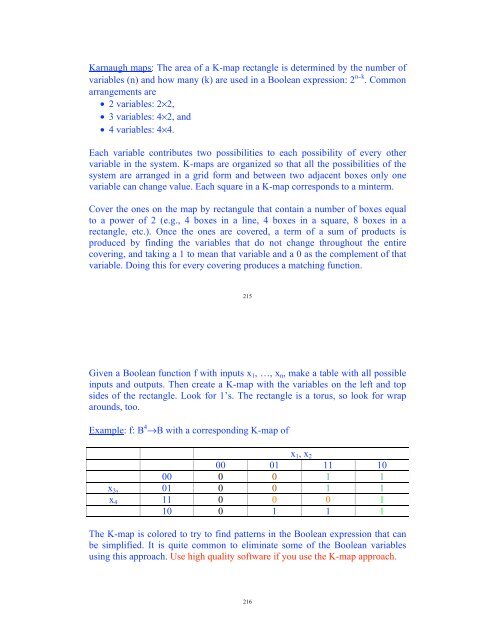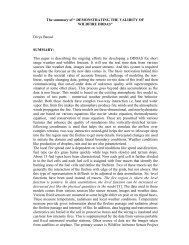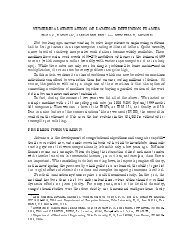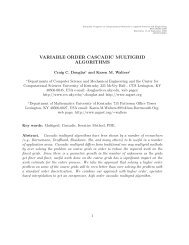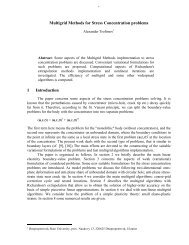Discrete Mathematics University of Kentucky CS 275 Spring ... - MGNet
Discrete Mathematics University of Kentucky CS 275 Spring ... - MGNet
Discrete Mathematics University of Kentucky CS 275 Spring ... - MGNet
You also want an ePaper? Increase the reach of your titles
YUMPU automatically turns print PDFs into web optimized ePapers that Google loves.
Karnaugh maps: The area <strong>of</strong> a K-map rectangle is determined by the number <strong>of</strong><br />
variables (n) and how many (k) are used in a Boolean expression: 2 n4k . Common<br />
arrangements are<br />
• 2 variables: 2$2,<br />
• 3 variables: 4$2, and<br />
• 4 variables: 4$4.<br />
Each variable contributes two possibilities to each possibility <strong>of</strong> every other<br />
variable in the system. K-maps are organized so that all the possibilities <strong>of</strong> the<br />
system are arranged in a grid form and between two adjacent boxes only one<br />
variable can change value. Each square in a K-map corresponds to a minterm.<br />
Cover the ones on the map by rectangule that contain a number <strong>of</strong> boxes equal<br />
to a power <strong>of</strong> 2 (e.g., 4 boxes in a line, 4 boxes in a square, 8 boxes in a<br />
rectangle, etc.). Once the ones are covered, a term <strong>of</strong> a sum <strong>of</strong> products is<br />
produced by finding the variables that do not change throughout the entire<br />
covering, and taking a 1 to mean that variable and a 0 as the complement <strong>of</strong> that<br />
variable. Doing this for every covering produces a matching function.<br />
215<br />
Given a Boolean function f with inputs x 1 , …, x n , make a table with all possible<br />
inputs and outputs. Then create a K-map with the variables on the left and top<br />
sides <strong>of</strong> the rectangle. Look for 1’s. The rectangle is a torus, so look for wrap<br />
arounds, too.<br />
Example: f: B 4 %B with a corresponding K-map <strong>of</strong><br />
x 1 , x 2<br />
00 01 11 10<br />
00 0 0 1 1<br />
x 3 , 01 0 0 1 1<br />
x 4 11 0 0 0 1<br />
10 0 1 1 1<br />
The K-map is colored to try to find patterns in the Boolean expression that can<br />
be simplified. It is quite common to eliminate some <strong>of</strong> the Boolean variables<br />
using this approach. Use high quality s<strong>of</strong>tware if you use the K-map approach.<br />
216


